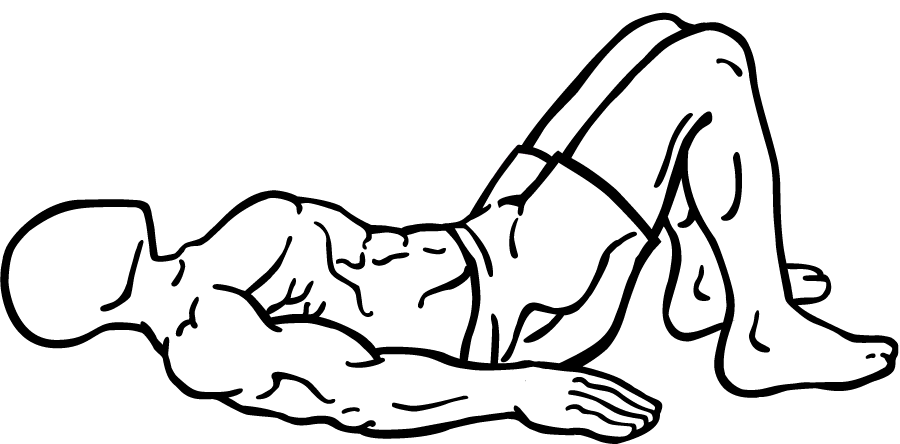Last Updated on August 27, 2014
The Bridging exercise or Bridge is a simple yet powerful movement that targets your core and glutes, providing numerous benefits for both beginners and seasoned fitness enthusiasts. This comprehensive guide will walk you through the steps to perform the bridge exercise correctly, explore its variations, and highlight its benefits. Whether you’re looking to improve your posture, alleviate back pain, or simply enhance your workout routine, the bridge exercise is an excellent addition to your fitness arsenal.
Understanding the Bridge Exercise
The bridge exercise primarily targets the gluteus maximus, the largest muscle in your buttocks, along with the hamstrings and core muscles. By engaging these muscles, the bridge exercise helps improve core stability and lower body strength, making it a versatile movement suitable for various fitness goals.
How to Perform the Basic Bridge Exercise
To get started with the bridge exercise, follow these steps:
- Lie on Your Back: Begin by lying flat on your back on a comfortable surface like a yoga mat. Bend your knees and place your feet flat on the floor, hip-width apart. Your arms should rest at your sides with palms facing down.
- Position Your Feet: Ensure that your feet are positioned about 6–8 inches from your glutes. This distance allows for optimal engagement of the glute muscles during the exercise.
- Engage Your Core: Draw in your abs and keep your glutes tight as you prepare to lift your hips.
- Lift Your Hips: Press through your heels to lift your hips off the ground. Aim to create a straight line from your shoulders to your knees at the top of the movement.
- Hold and Squeeze: At the peak of the bridge, squeeze your glutes tightly and hold for a few seconds before lowering back down in a controlled manner.
Common Mistakes to Avoid
While performing the bridge exercise, it’s crucial to maintain proper form to maximize its benefits and prevent injury:
- Arching Your Back: Avoid arching your lower back as you lift your hips. Focus on keeping a neutral spine by engaging your core muscles.
- Insufficient Glute Activation: Ensure that you’re fully activating your glutes at the top of the movement. Your hips should be aligned with your knees and shoulders.
- Incorrect Foot Placement: If you feel excessive strain in your hamstrings, check that your feet are not too far from your glutes.
Benefits of the Bridge Exercise
Incorporating bridge exercises into your routine offers several advantages:
- Improved Core Stability: The bridge exercise strengthens core stabilizer muscles like the transversus abdominis, enhancing overall stability.
- Enhanced Glute Activation: Regular practice helps activate and strengthen glute muscles, contributing to better posture and reduced back pain.
- Low-Impact Workout: As a low-impact exercise, bridges are suitable for individuals with joint concerns or those recovering from injuries.
- Versatility and Convenience: The bridge exercise requires no equipment and can be performed anywhere, making it an easy addition to any workout routine.
Variations of the Bridge Exercise
To add variety and challenge to your workouts, consider incorporating these bridge exercise variations:
- Weighted Bridge: Place a dumbbell or weighted bag on your hips for added resistance. This variation increases strength and muscle engagement.
- Single-Leg Bridge: Perform the bridge using one leg while keeping the other leg extended straight up. This variation challenges balance and core stability.
- Elevated Bridge: Use a bench or step to elevate your upper back while performing the bridge. This increases the range of motion and targets different muscle fibers.
- Resistance Band Bridge: Place a resistance band around your thighs just above the knees to increase tension on the glutes during the movement.
Incorporating Bridges into Your Routine
Bridge exercises can be integrated into various parts of your fitness routine:
- Warm-Up or Cool Down: Use bridges as part of a dynamic warm-up or cool down to activate muscles before or after more intense workouts.
- Strength Training Circuit: Include bridges in a circuit training session alongside other lower body exercises like squats or lunges.
- Core Workout: Pair bridges with other core exercises such as planks or Russian twists for a comprehensive core workout.
The bridge exercise is an effective way to strengthen key muscle groups while improving stability and posture. By mastering this foundational movement and exploring its variations, you can enhance your overall fitness level and enjoy its myriad benefits. Remember to focus on proper form and gradually increase intensity as you become more comfortable with the exercise. Incorporate bridges into your regular routine for a stronger core, healthier posture, and improved athletic performance.









